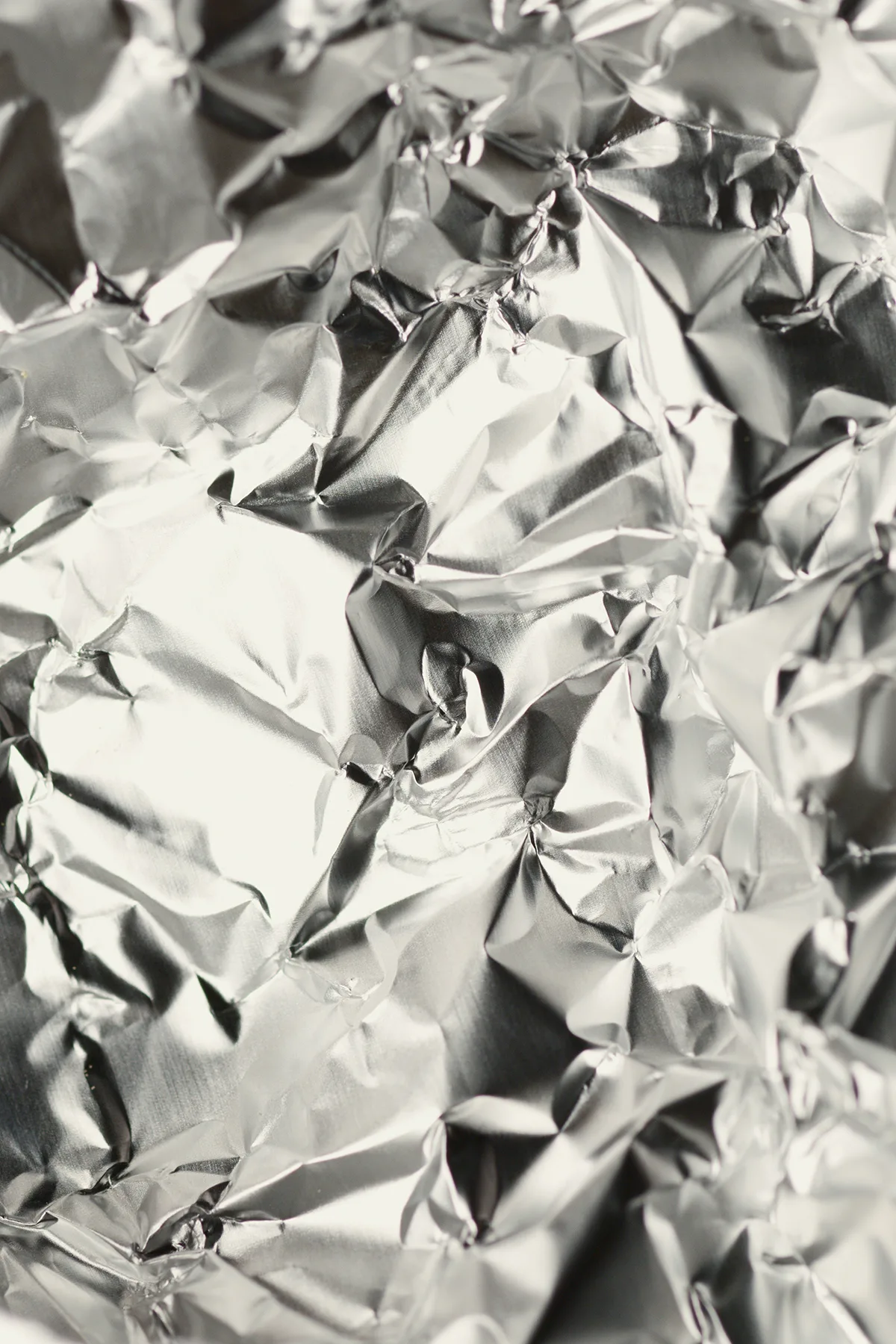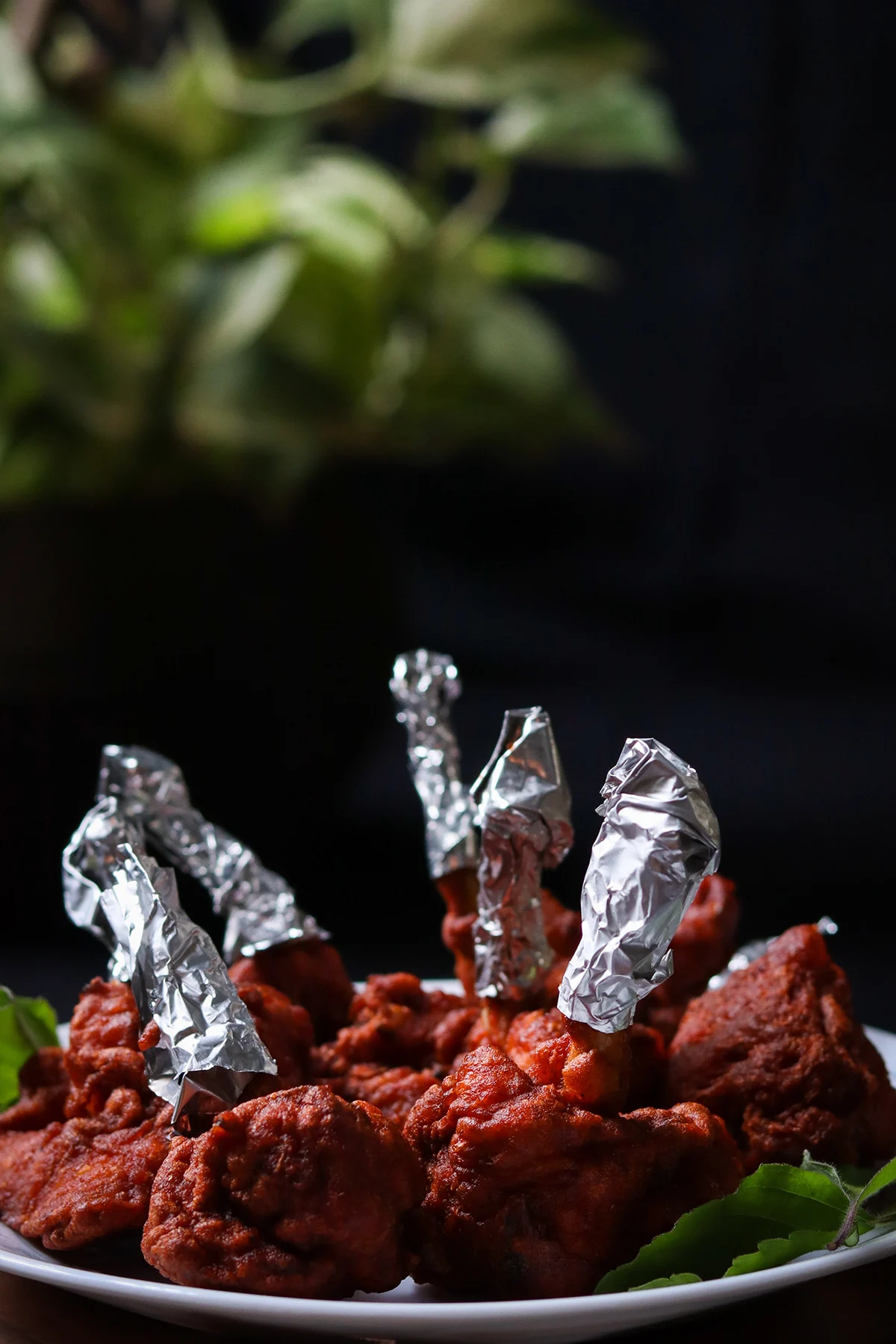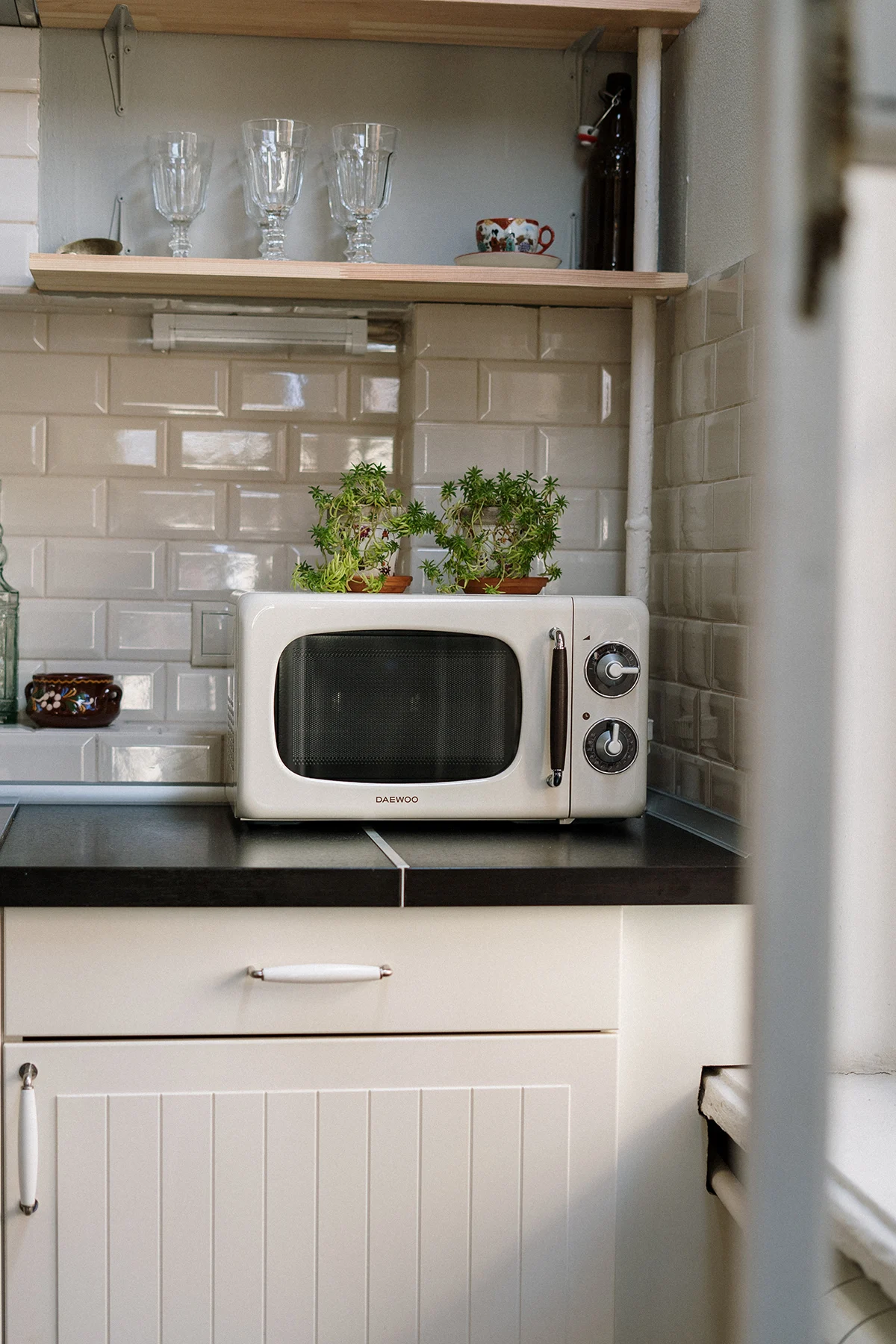You probably know that putting anything metal in a microwave is a big no-no. But can you put aluminum foil in the microwave? As it turns out, you can!

You can use aluminum foil in the microwave, but there are some precautions you have to take first. There are also certain situations where you should never use foil in a microwave.
Read on to find out all about using aluminum foil in the microwave, and how to stay safe while doing it.
Read More: Can You Bake Cookies on Foil? 5 Important Tips
What is aluminum foil?
Aluminum foil is a thin, yet strong and flexible material made primarily of aluminum. It consists of 98 percent aluminum and 2 percent plastic or other materials. The smooth side (the side that used to be the inside of the roll) is coated with a metallic layer and sometimes also color.
The outside coating acts as a barrier between the metal and food so that when you eat something that has been wrapped in foil, you don’t get aluminum poisoning from ingesting too much aluminum.

Aluminum foil can come in many different sizes such as standard household size measuring 12 inches x 10 feet, heavy-duty measuring 18 inches x 13 feet, and extra heavy-duty measuring 24 inches by 15 feet.
You can use standard household foil to wrap food and prepare it in the oven, or you can cut a piece to place underneath a dish to make cleaning up a breeze.
How do microwaves work?
A microwave works by using radio waves, which are electromagnetic waves with frequencies ranging from 300 MHz to 300 GHz. All these waves do is make water molecules rotate quickly, and they continue to do so even when the microwaves are turned off.
Water molecules in food rotate when exposed to microwaves, which causes heat in the food and is the reason food heats up.
Microwaves are basically big metal boxes, and metal does not conduct heat, it reflects it. That is why the radio waves stay in the microwave and do not escape out into your kitchen.
Can I put metal in a microwave?
The inside of a microwave is actually made of metal. While water and fat absorb radio waves, these thick pieces of metal act like a mirror and reflect the radio waves back to the food.
The electric fields in a microwave cause electrical currents to flow through metal. Thick pieces of metal can handle the currents without any problems and will reflect the radio waves.
If you place your food into a thick metal pan and put it in a microwave, it will never heat up. The radio waves will not penetrate the metal, it will simply reflect back into the microwave.
So, you CAN put aluminum foil in a microwave?
Thick pieces of metal can withstand these electrical currents, but what about thinner pieces like aluminum foil? Because aluminum foil is so thin, it can’t handle the electrical currents and will heat up rapidly. This will cause sparking and if any of these sparks touch another surface, such as food or baking paper, it will start a fire.
You can put small amounts of aluminum foil in the microwave. Just don’t completely cover food in foil before placing it in the microwave. (This wouldn’t work anyway as the foil would reflect the heat so the food wouldn’t heat up.)

Microwaves will bounce back off the reflective metal and could damage the microwave oven. This will also prevent the microwave from heating food correctly and will result in uneven cooking.
You can use small pieces of aluminum foil to cover parts of food, such as poultry drumsticks or wings.
If you are going to use aluminum foil in a microwave, follow these guidelines as recommended by the FDA:
Only use smooth aluminum foil
Ensure the foil you use is smooth. Using crinkled foil that has jagged edges could cause sparks in your microwave. This type of foil is also more dangerous and can cause injuries if handled improperly.
Keep it small
Make sure the piece of aluminum foil is not more than two layers thick. Ensure you do not cover up any parts of your microwave’s interior, such as light covers or vents.
Don’t cover the whole piece of food
Covering the whole piece of food with foil could damage your microwave oven. Metal reflects microwaves which cause the radio waves to bounce around in the oven. Don’t cover any more than 25% of the food with foil.
Keep the foil away from the edges
Make sure your foil does not cover the edge of your microwave. Keep a gap of at least 1 inch from the walls and the roof of the microwave.
Use It for short periods
Only use aluminum foil in the microwave for short periods of time. The FDA recommends no longer than 30 seconds before removing it. This will give you enough time to heat up food without causing damage to your oven’s components.
Don’t use with a metal turntable or shelf
If your microwave has a metal turntable or a metal shelf, do not use foil in it. The extra metal will cause the microwaves to reflect too much and will damage your microwave oven.
Stop if you see sparks
If you see any sparks when microwaving with aluminum foil, stop immediately. Turn off the microwave and then carefully remove the foil.
Can I use aluminum cookware in a microwave?
There is a variety of different cookware products that are made from aluminum foil, including cookware, baking pans, plates, bowls, utensils, and bakeware. Aluminum is a good material for cookware because it conducts heat well and spreads it evenly throughout the food.
As for using it in the microwave, the answer is – it depends. This will vary depending on the manufacturer, so it’s always best to check the packaging to see if you can use it in the microwave.
If in doubt, don’t use anything in the microwave that you are unsure about, and stick to microwave-safe varieties.
How do I know if aluminum foil is microwave safe?
There are several ways to find out if you can put aluminum foil in the microwave. The easiest way is to look at the packaging. If it says you can put the aluminum foil in the microwave, then you can use it.
If there isn’t any information on how to use aluminum foil in a microwave on the packaging, try searching online for information from other customers or from manufacturers.

In general, products that are made from thick aluminum might not be microwavable while the flimsier foil will usually say that it is safe to use in a microwave.
If you cannot find any information online or if your aluminum foil does not have instructions on its packaging, don’t risk using it in a microwave because it could damage your oven and cause injuries.
What happens if you accidentally put a lot of foil in the microwave?
If you accidentally put aluminum foil in the microwave, stop immediately. Turn off the microwave if it’s on and remove the foil carefully. Make sure not to touch any of the metal parts of your oven because they will be very hot.
If you see sparks inside the microwave, turn off the power and switch off the power outlet. Let everything inside the microwave cool down before attempting to remove them.
Why does aluminum foil spark in the microwave?
If you have a piece of metal in the microwave, Electrical charges in the metal move around. A high voltage may build up on a narrow portion of the metal, such as on aluminum foil or a fork, resulting in a spark due to the breakdown voltage of air being exceeded.
Can the foil catch on fire in the oven?
Aluminum foil can’t catch on fire in a regular oven, as the temperature never gets hot enough. Ovens create heat, unlike microwaves that create radio waves. However, if you try to put foil in a self-cleaning oven or an on oven broiler, the temperature will be very high.
This could result in the foil catching on fire if it is left inside for too long while cleaning/broiling. Aluminum foil’s melting point is around ~660°F (349°C) – much hotter than the highest setting of your average oven.
So is it a good idea to use foil in the microwave?
Aluminum foil is a great material for cooking because it conducts heat well and spreads it evenly through the food.
However, there are still some situations in which you should avoid using aluminum foil in the microwave – namely if your microwave has metal parts that could reflect microwaves back at dangerous intensities, or when covering more than 25% of your food with foil.
I hope this article has been helpful and remember if in doubt, just don’t put aluminum foil in the microwave!
Read more: Interesting kitchen tips
